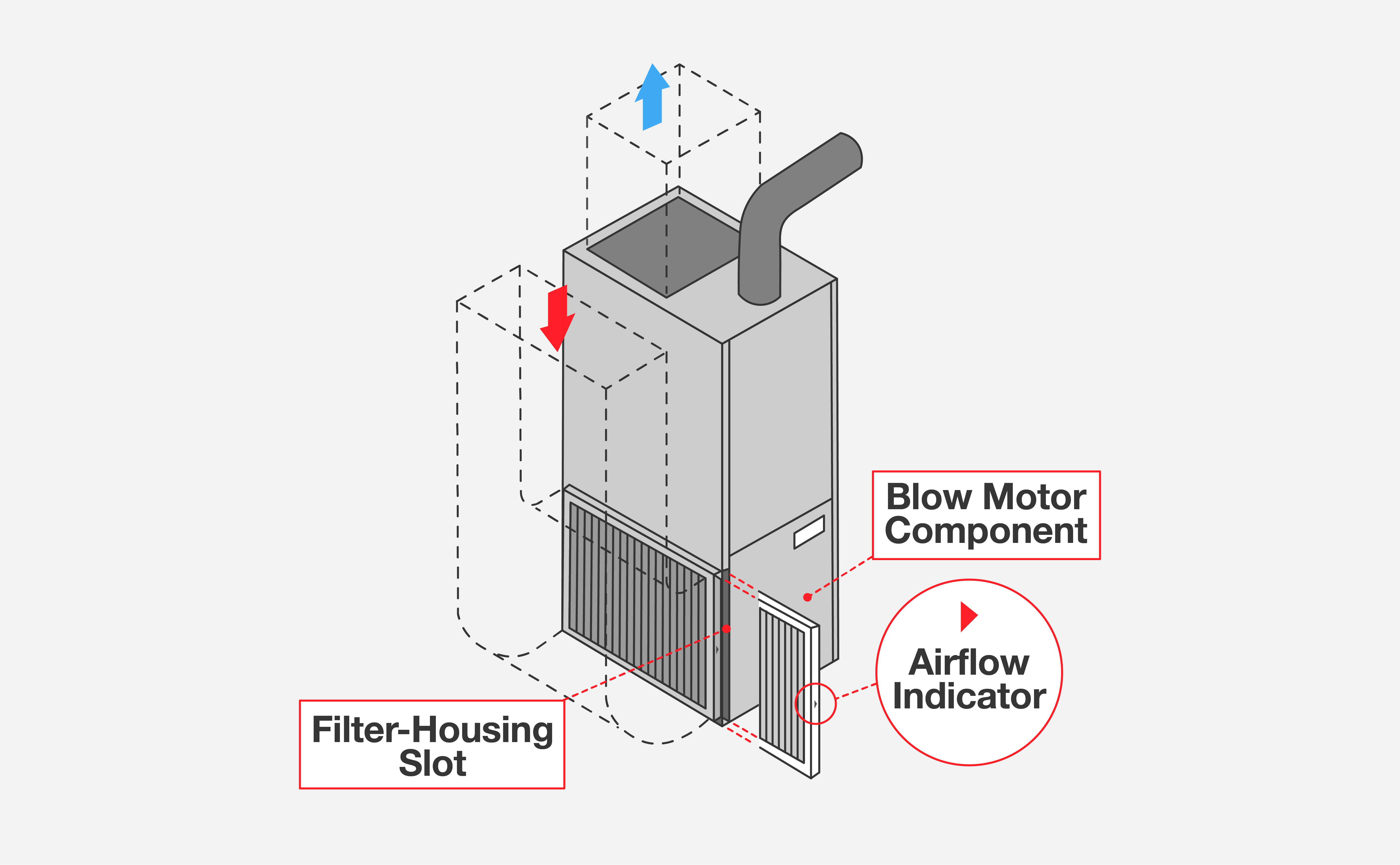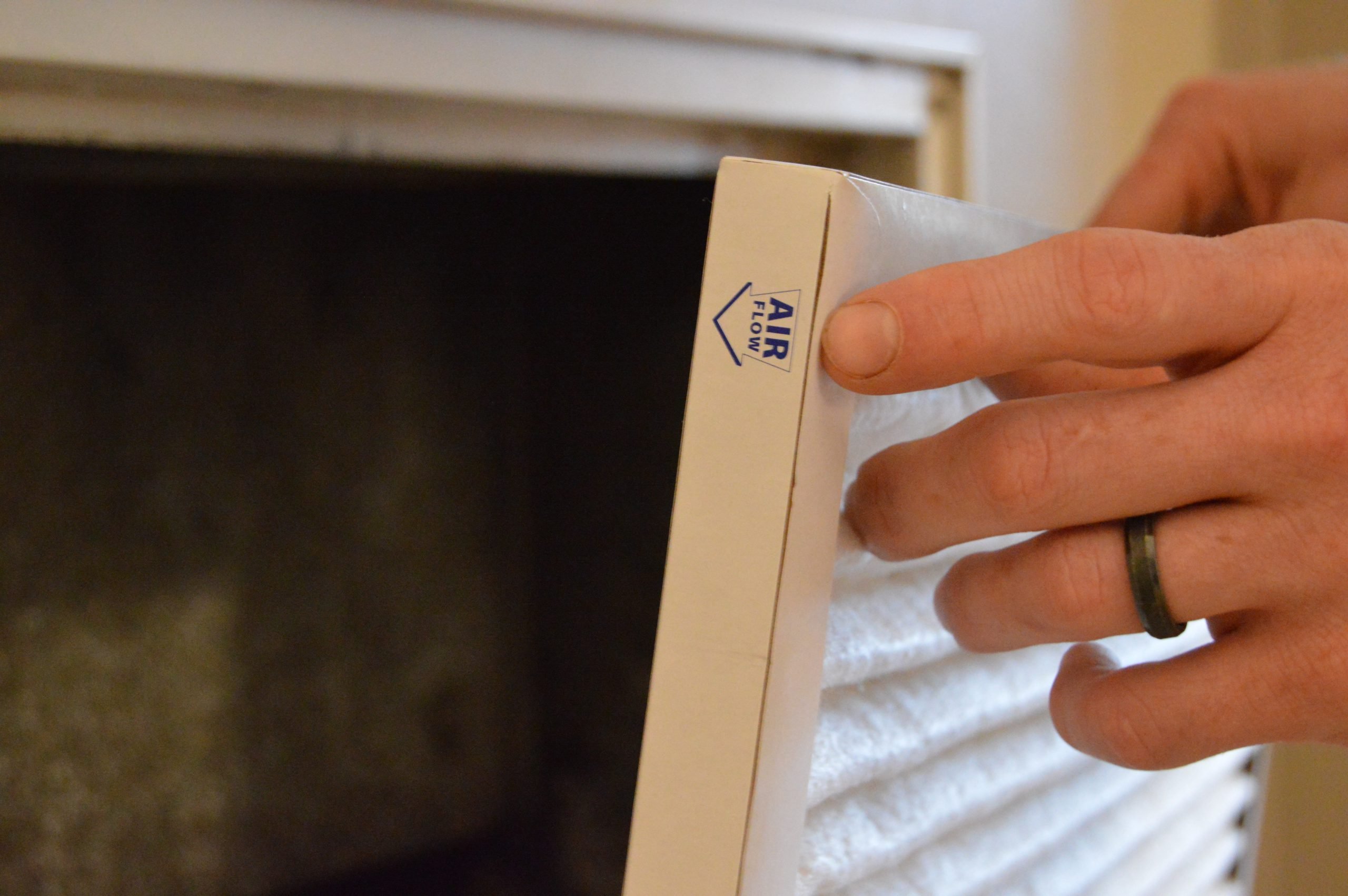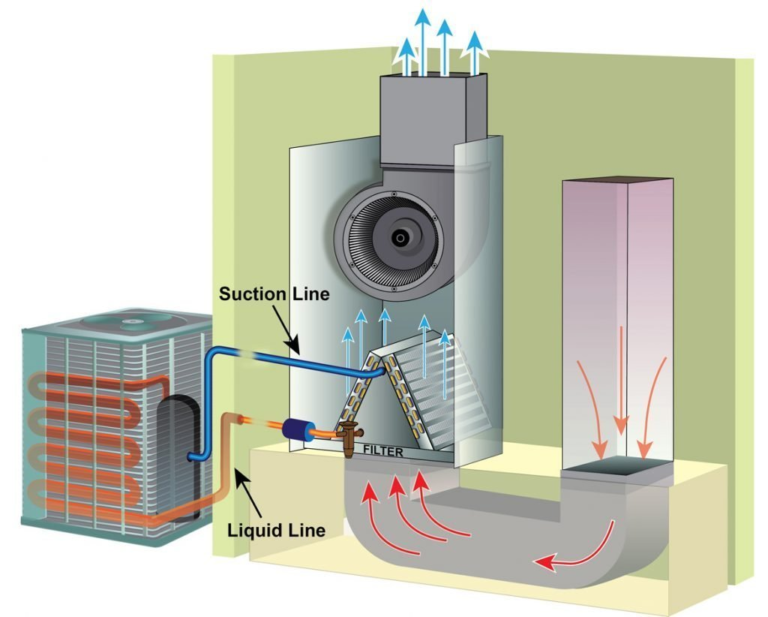Which Way Is Air Flow On Ac Filter

Understanding Airflow Direction on Your AC Filter: A Comprehensive Guide
One of the most common questions homeowners face when dealing with their HVAC systems is: "Which way does the air flow on my AC filter?" It's a simple question with a crucial answer, as installing your filter backward can significantly impact your system's performance and lifespan. This guide will walk you through understanding airflow direction, identifying the arrow on your filter, and why proper installation is vital.
Why Airflow Direction Matters
Your AC filter's primary purpose is to trap dust, pollen, pet dander, and other airborne particles before they enter your HVAC system. These particles can clog the system's delicate components, reducing efficiency, increasing energy consumption, and potentially leading to costly repairs. Filters are designed to capture these particles on one side, with the clean air then passing through to the other side and into your HVAC unit.
Installing the filter backward means that the dirty air bypasses the filtration media more easily. This results in increased buildup of dust and debris on the evaporator coil, blower motor, and other internal parts. This buildup can cause the system to work harder, leading to:
- Reduced airflow: The system struggles to move air effectively.
- Increased energy bills: The unit runs longer to achieve the desired temperature.
- Overheating: The motor may overheat due to restricted airflow.
- Component failure: Coils can freeze, and motors can burn out.
- Poor air quality: More allergens and pollutants circulate in your home.
Identifying the Airflow Arrow
Luckily, most AC filters have an arrow printed on the frame indicating the intended direction of airflow. This arrow should always point towards the air handler or furnace – the main unit that houses the blower motor and evaporator coil. Follow these steps to correctly install your filter:
- Locate the filter compartment: This is usually located near the air handler or furnace, often in a wall, ceiling, or the unit itself.
- Remove the old filter: Note the direction of the arrow on the old filter before discarding it.
- Inspect the new filter: Find the arrow printed on the frame.
- Install the new filter: Align the arrow on the filter with the airflow direction (towards the unit).
- Secure the filter: Close the access panel or door to secure the filter in place.
What If There's No Arrow?
While most filters have an arrow, some may not. In this case, consider the construction of the filter. Generally, the side with a more open or coarse mesh faces the incoming airflow, while the finer, more dense side faces the unit. If you're still unsure, consult the filter manufacturer's instructions or contact an HVAC professional.
Choosing the Right AC Filter: Types and Ratings
Besides airflow direction, choosing the right type of AC filter is crucial for optimal performance and air quality. Filters are rated using the Minimum Efficiency Reporting Value (MERV) scale, which ranges from 1 to 20. Higher MERV ratings indicate better filtration, but also increased airflow resistance.
Common Filter Types:
- Fiberglass Filters (MERV 1-4): These are the most basic and inexpensive filters. They primarily protect the HVAC equipment from large particles but offer minimal air filtration.
- Pleated Filters (MERV 5-12): Made from pleated paper or fabric, these filters offer better filtration than fiberglass filters and can capture smaller particles like pollen and pet dander. They are a good balance between filtration and airflow.
- Electrostatic Filters (MERV 5-12): These filters use an electrostatic charge to attract and trap particles. They are reusable and washable, but require regular cleaning.
- HEPA Filters (MERV 17-20): High-Efficiency Particulate Air (HEPA) filters are the most effective at removing airborne particles, capturing 99.97% of particles 0.3 microns or larger. However, they can significantly restrict airflow and may not be suitable for all HVAC systems.
Balancing Filtration and Airflow
Choosing a filter with a too-high MERV rating can restrict airflow, causing your system to work harder and potentially leading to damage. Consult your HVAC system's manual or an HVAC professional to determine the appropriate MERV rating for your unit. A MERV rating of 8-11 is generally recommended for residential use, offering a good balance between filtration and airflow.
Maintaining Your HVAC System for Optimal Performance
Regular filter replacement is a crucial part of HVAC system maintenance. A dirty filter can significantly reduce system efficiency and air quality. How often you need to change your filter depends on several factors, including:
- Filter type: Thicker, pleated filters generally last longer than thin fiberglass filters.
- Indoor air quality: Homes with pets, smokers, or high levels of dust and pollen will require more frequent filter changes.
- HVAC system usage: Systems that run frequently will need more frequent filter changes.
As a general guideline, replace fiberglass filters monthly and pleated filters every 1-3 months. Regularly inspect your filter and replace it when it appears dirty or clogged.
Professional HVAC Maintenance
In addition to filter replacement, consider scheduling annual or bi-annual maintenance with a qualified HVAC technician. They can inspect and clean the system's components, check refrigerant levels, and identify potential problems before they become major issues. This proactive maintenance can help extend the life of your HVAC system and ensure optimal performance.
Popular HVAC Brands and Models
When considering a new HVAC system, several reputable brands offer energy-efficient and reliable models. Here are a few popular options:
- Carrier: Known for their innovative technology and high-efficiency systems. Look for models with high SEER (Seasonal Energy Efficiency Ratio) and HSPF (Heating Seasonal Performance Factor) ratings.
- Trane: Offers durable and reliable systems with a wide range of options to suit different needs and budgets.
- Lennox: Focuses on energy efficiency and quiet operation. Their premium models offer advanced features and smart home integration.
- Goodman: A more budget-friendly option that still offers decent performance and reliability.
- Rheem: Known for their water heating and HVAC products. They offer a range of energy-efficient options with reliable performance.
Understanding HVAC Ratings: SEER, AFUE, and HSPF
When evaluating HVAC systems, pay attention to the following ratings:
- SEER (Seasonal Energy Efficiency Ratio): Measures the cooling efficiency of an air conditioner or heat pump. Higher SEER ratings indicate better energy efficiency. The minimum SEER rating currently required in the United States is 14.
- AFUE (Annual Fuel Utilization Efficiency): Measures the heating efficiency of a furnace. Higher AFUE ratings indicate better energy efficiency. The minimum AFUE rating for new furnaces is typically around 80%.
- HSPF (Heating Seasonal Performance Factor): Measures the heating efficiency of a heat pump. Higher HSPF ratings indicate better energy efficiency. The minimum HSPF rating is 8.2.
Warranties and Maintenance Needs
Before purchasing an HVAC system, carefully review the warranty terms and conditions. Most manufacturers offer warranties that cover parts and labor for a specific period. Register your system promptly after installation to ensure you are covered under the warranty.
Proper maintenance is crucial for maintaining your warranty and extending the life of your HVAC system. Keep detailed records of all maintenance and repairs. Regular maintenance can also help prevent costly breakdowns and ensure optimal performance.
Conclusion
Understanding airflow direction on your AC filter is a small but crucial aspect of maintaining your HVAC system. By correctly installing your filter and choosing the right type, you can improve your system's efficiency, air quality, and lifespan. Remember to consult your HVAC system's manual or an HVAC professional if you have any questions or concerns. With proper care and maintenance, your HVAC system will provide years of reliable and efficient service.










